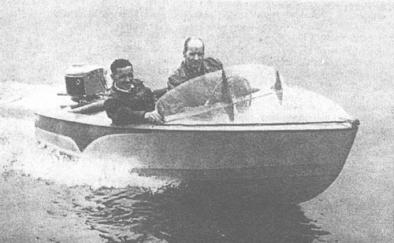
british anzani archive:





never to own an Anzani product. Harrison thought it would cost too much in ‘free
spares, service and overhauls’. He also ordered that all parts that were rejected
by Inspection but which might still be useful (at a pinch) to someone with
enough skill to ‘fit’ them, should be destroyed for the same reason.
Moonlighting was absolutely forbidden!
Amenities for employees were non existent. There was no canteen and only one
short teabreak each day (AM) though you were allowed to bring a flask of your
own tea providing that you could drink it without stopping work! The factory was
cold in winter, but always felt warm to me as my test house was totally unheated
(The extractor fans made heating a problem). I used to wear TWO kapok ex-
RAF flying suit inner linings under a boiler suit, and did not notice the cold at all!
What memories do you have of Harrison & Jock Edwards?
Jock Edwards I remember well. He was a very short Scotsman, but what he
lacked in stature he made up for in bounce! In a fight I would have backed him
against a giant, and he left nobody in any doubt as to who was in charge. He
was a fine engineer, and a perfect shop foreman. Charles Harrison on the other
hand was extremely tall, very thin and of a highly nervous disposition! He always
seemed to be uncomfortable talking to me and would not remain still, constantly
changing his weight from one foot to another whilst looking all around him. He
appeared always anxious to get away, rather as a person would behave if
desperate to get to the loo. I got on well with both of them. Charles Harrison was
certainly a good business man, and was very proud of his factory. He was
enthusiastic about motorcycles and hydroplanes and anything connected with
engines, but in my opinion he was not the driving force at Anzani, Jock Edwards
ruled the roost and was responsible for most of the innovations too. The chief
draftsman was a huge asset to the company, and the machine shop foreman
was also first rate.
And your old boss...?
Richard Christoforides was the son of a Greek millionaire, and the brother of
Lady Beaverbrook. As a wealthy and clever engineer he could afford to
manufacture a variety of products, all of which had considerable merit, and all of
which eventually went bust. These included aircraft (the Chrislea Ace, built
whilst he owned Exeter Airport!) boats and cars and finally, the RCA engine in
which venture Ben Rood was also a Director. (Ben went on to found Cosworth
with Keith Duckworth and Mike Costin).
He did design other cars, including the ‘Stiletto’ for Rupert Froggatt, but it never
was built. (Froggatt, I believe owned the manufacturing right for the very pretty
little German ‘Bruetsch’ car too). Christoforides died about 1965, a
comparatively poor man.
Were there problems with the air-cooled Unitwins...?
The standard water cooled Unitwin outboard was trouble free, and was really
quite a sweet motor. Harrison had one of these converted into a motorcycle
engine, by bolting it up into a unit with an Albion gearbox. This was still water
cooled and worked very well. Harrison, flushed with success, now ordered a
proper air cooled motorcycle engine into production, and this was produced in
both 250cc and 322cc sizes. My brother had a 250, and it worked well (but that
is another story!) so when I approached Harrison for an engine to try out in the
JARC (John, Athena & Richard Christoforides!), I had every reason to believe
that it would be a sound unit, but it was nothing of the kind! The installation in
the JARC was neat and very smooth running, but the performance was gutless,
particularly at low RPM.
In an effort to obtain a quick fix, I considered removing the Siba Dynastart and
refitting a standard flywheel magneto, as this was the only significant difference
between the car engine and versions that I knew to run well. Dismantling was
barely begun when I discovered that the car engine had been fitted with a totally
unsuitable centrifugal advance and retard mechanism. With this locked in the
fully advanced position the performance was much improved - but still ‘queer’.
A stroboscopic check on the ignition revealed that huge timing variations were
taking place as the crankshaft floated up and down, for the massive Dynastart
had been fitted without providing any extra support for it! With an outrigger
bearing added just behind the cam, the engine now ran properly for the first
time, but as soon as it was driven hard it suffered from piston seizures. This
was the main weakness in the engine, for the distance between the cylinder
bore centres was only three inches, and the cylinders were nearly touching in
the middle. This was fine on the water cooled layout but produced a shocking
hot spot and cylinder distortion problems on the air cooled version, which
limited the amount of power that could be safely extracted from it. Piston
clearance was increased by degrees until full power could be sustained, and
the dreadful piston slap which resulted, was cured with spring steel expanders
behind the rings.
With a Zenith car carburettor fitted (You can’t ‘tickle’ the carb on a car!) and a






